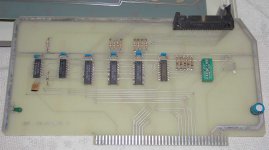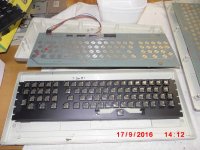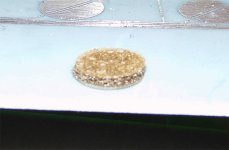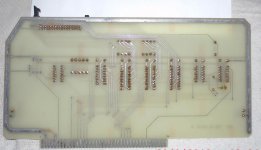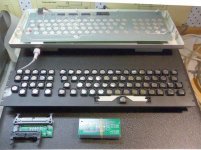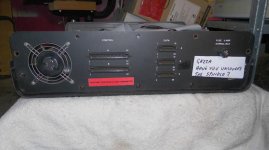Gazza
Experienced Member
This is called "Modeltwoitis", a common ailment of big Tandy fans. It only gets worse as you age. I am already planning out the final resting spot for my heavier machines for when I retire.
I've been in a parallel universe since lugging these things around. It was dark when I got home and I couldn't be bothered shuffling cars up and down the driveway, so 1..2..3.. and up on the shoulder - still paying for it.
I'm too old, fat and bald for this.
Are you certain it doesn't have the plastic disc on one end instead of mylar? I don't see how the little plastic fingers on the plunger would be able to hold the pad if it was just mylar. Unless someone tried to rebuild the keyboard incorrectly in the past.
Correct Pete, one side looks to be ex-metalized mylar and the other side is slightly thicker.
Finally managed to take a pic of that mysterious PCB - still none the wiser.
Sorry about the quality of the pics but the cross-hairs on the camera were leaping all over the board - couldn't make-up it's mind what it wanted to focus on.
I was informed today that there is another HD to be repaired and that the collection of 8" floppies I was given is just a small part of what came with these computers - I think he sent you a few jpg's of what's available.
Next question - whats the best option on a 34 pin to 50 pin adapter?
I only have one copy of some of these disks, so the sooner I can get them on the HXC the better.
cheers
Gazza
